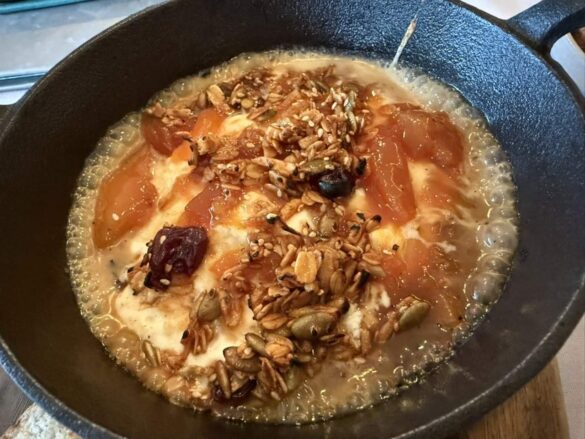Anyone landing in Detroit for the first time may well agree with me that it’s a pretty funky city. Yet it has a remarkable rags-to-riches story that only recently turned the corner. Just 10 years or so ago, Detroit, a vast city of 138 thousand square miles, was the largest in the US to go bust.
Most of downtown Detroit’s skyscrapers were abandoned or derelict. Poverty was rife, and it was so bad that people were scared to live here. Detroit adopted its city motto: “Speramus Meliora; Resurget Cineribus” which means We hope for better days; it shall rise from the ashes. Perhaps those days are here now.
Renovated buildings and gleaming skyscrapers lord it over pristine streets, high-end retailers, glorious iconic hotels, trendy restaurants and offbeat street art appear on stylish wide wide-open avenues that radiate out like the spokes of a wheel.
Walk around Dowtown Detroit
Detroit is easily navigable on foot. I started from Hotel David Whitney, where I was staying, an incredible epochal hotel that lay dormant for years and is now a paragon of outstanding architecture. Conveniently, the hotel offers direct access to the elevated train service, the Detroit People Mover, from Grand Circus Station. The three-mile ride offers a quaint journey circling 13 stations, for a really good orientation of the city.

Detroit People Mover
Downtown Detroit’s Woodward Avenue, historically the commercial centre, is famous for being the location of the first mile of concrete-paved roadway in the United States. This main drag is replete with an eclectice range of newly created retail outlets and restaurants, and home to sports arenas, Comerica Park (home of the Tigers) and Ford Field (home of the Lions).
The most recent development is the Shinola Hotel compound on 1400 Woodward Avenue. A creative partnership with Bedrock real estate developer enabled this high-end manufacturer of luxury watches, tables, leather goods and homeware to open a design-first boutique hotel. It is the only hotel in the city with a Michelin key.
Just behind it is Parker’s alley, a really cute mini shopping district where Aromalabs lives (1435 Farmer St) and where I spent an hour or two curating my own scent.
As skyscrapers go, the Book Tower, with its imposing copper top is worth raising eyes for. It was designed by architect Louis Kamper to transform Washington Boulevard a parallel thoroughfare. When it opened in 1926, it was the tallest structure in the city at 38 stories. By 2009, the building was dilapidated and remained empty until Bedrock bought it in 2015. Seven years and nearly $400m later, the building has five restaurants, hundreds of apartments and hotel rooms and has transformed the area. Look up again to see the gorgeous caryatids – female statues – keeping an eye on their newly resplendent city.
The stunning interiors of the striking Art Deco skyscraper, the Guardian building, a National Historic Landmark, dressed in tangerine-hued bricks on nearby Griswald Street, are a must-see. It was built as a Cathedral of Finance, and the artwork and ceilings are simply stunning. Depicted are workers in farming, fishing, and manufacturing, all in glorious colour.
Eastern Market
For an instant glimpse of local life, I visited Eastern Market on Russel Street, the largest farmer’s market in the country. Farm to table goods, flowers and local crafts fill up five ‘sheds’. It’s an experience of hustle and bustle of micro industry.

SaturdayMarket c. Eastern Market Partnership
Motown Museum, home to Hitsville USA
Don’t leave Detroit without visiting Motown Museum on West Grand Boulevard in Detroit. This is where the likes of Diana Ross, Smokey Robinson, The Temptations, Stevie Wonder and 40 other Motown stars were made, guided by the genius of Berry Gordy.

Motown Hitsville USA
Gordy created Hitsville U.S.A., Studio A in 1959 and in the early days of the label, he and his family lived here. His home is still on display. As the label expanded, Gordy bought eight houses on the boulevard. The way to visit is through a guided tour passing photos, outfits, artefacts, a film and ending in the recording studio where the stars churned out their music. We got to sing “My Girl”. Cute.
Incidentally, Gordi who once worked at the Ford Factory was inspired by Henry Ford and his methodical production line. He created a metaphorical factory line that took raw potential and putting it through a set formula of training and grooming, a star would come off his production line.
Henry Ford Museum
The Henry Ford Museum is an incredible collection of Americana. It started as a collection of his favourite collections but today it contains everything historicallty America including a display of automobiles spanning 150 years of development. There are also curiosities such as Hend Ford’s violin collection, the chair Abraham Lincoln was assassinated in, the bus where Rosa Parks refused to switch her seat during segregation, George Washington’s camp bed and the chair where Abraham Lincoln was assassinated.

The bus Rosa Parks refused to move to the back.
I also visit the nearby Ford Rouge Factory to watch as the Ford F-150 truck gets assembled as it passes through the factory line and got an insight into Gordy’s inspiration.
Detroit Institute of Arts (DIA)
Detroit Institute of Arts is the second largest art museum in the USA owning 65,000 articles of art. Only 5,000 of them are on display at any one time.

Detroit Industry, West Wall
Famously, the DIA hosts Diego Rivera’s murals. Rivera, who was married to fellow Mexican artist Frida Kahlo, was a Mexican communist who was brought in by Cecil Ford during the Great Depression to create artworks as a tribute to the industry and its workers. There are 27 panels collectively known as the “Detroit Industry Murals”. They show the evolution of the Ford Motor Company and highlight the human plight.
Cool Places to Eat in Detroit
Bert’s Place located in Eastern Market on Russel Street, is an atmospheric Motown-themed spot for lunch or dinner. I tucked into juicy smoked, delicious BBQ Ribs in an institution that has been preserving black history in Detroit for 35 years. It started as one room that turned into several as neighbouring buildings became free. There is an entire wall of gold records that belong to Jay Dearing, the owner of the joint who worked at Motown for several years. At the back, there is a long tunnel of glorious murals, and after dark, a nightclub pelts out Motown tunes.
Parc, on Woodward Avenue, offers contemporary dining, offering Detroit and Midwest flavour with a dash of French and Mediterranean panache. I loved the sharing the charred burrata made from grilled Michigan peaches and apricot compote, pumpkin Seed Granola, fired in front of us to sizzling effect. I also enjoyed the braised short rib served on mashed Yukon gold potatoes, and grilled broccoli was soft and totally delicious.
Adelina on Washington Boulevard offers upscale Italian cuisine in a convivial and stylish environment.The Executive Chef Marco Dalla Fontana, is a bit of a bon vivant; you may get to meet him. He recommends his favourite dishes of fettuccine and ravioli made every day. Both were great, but I loved the sensational tiramisu.
Where to Stay

Atrium lobby at David Whitney Hotel Detroit
Hotel David Whitney is probably the most iconic hotel in Destroit. The hotel is newly renovated, beautiful to look at with a cosy bar, spacious rooms, great service in a great location. Check out our full review of Hotel David Whitney.
One final tip for fellow chocaholics. Nip into Bon Bon chocolate shop. There’s one on S Woodward Avenue and another on Canfield Suite. These chocolates are around $3 each but when you taste one you will understand why. I bought the heavenly Salted caramel, Bon Bon Bon Dark Chocolate and Matcha ganache, creamy espresso ganache, dark chocolate.
The post 48 hours in Downtown Detroit, Michigan, USA appeared first on The Travel Magazine.































